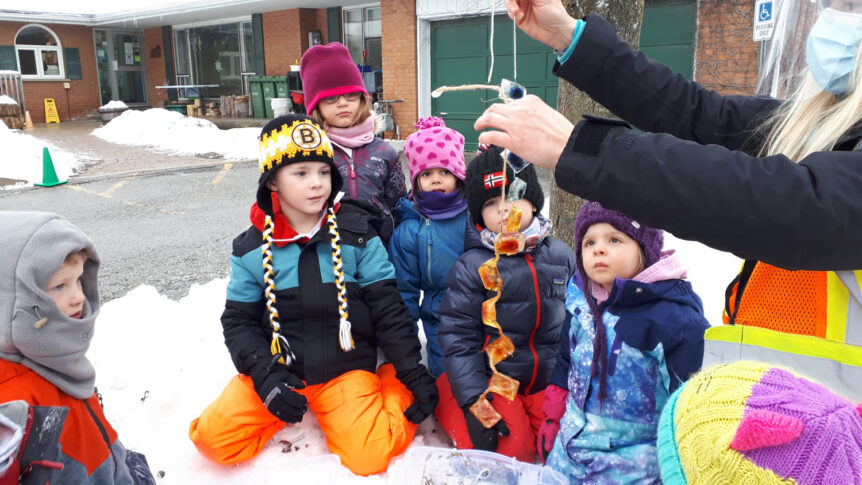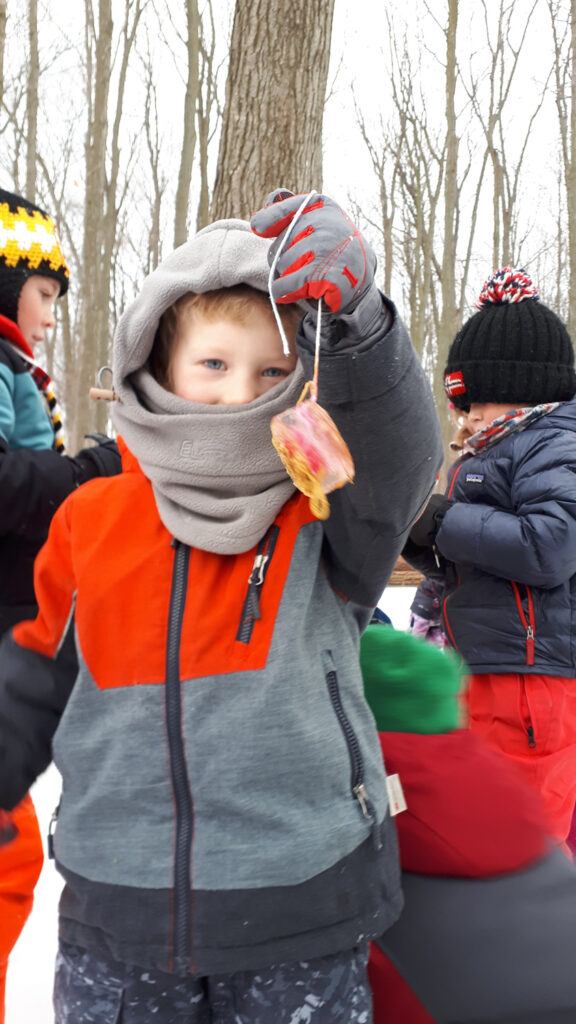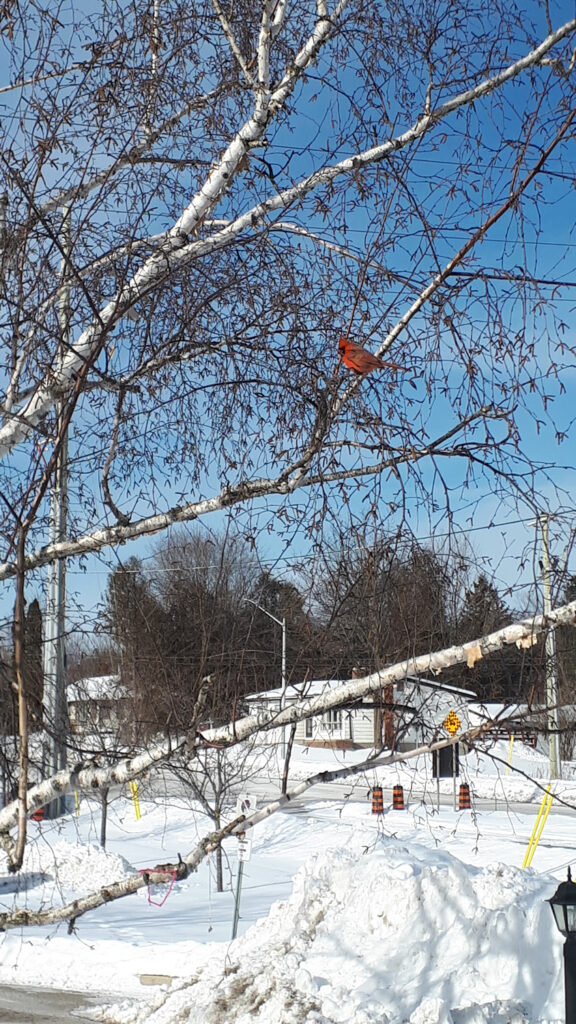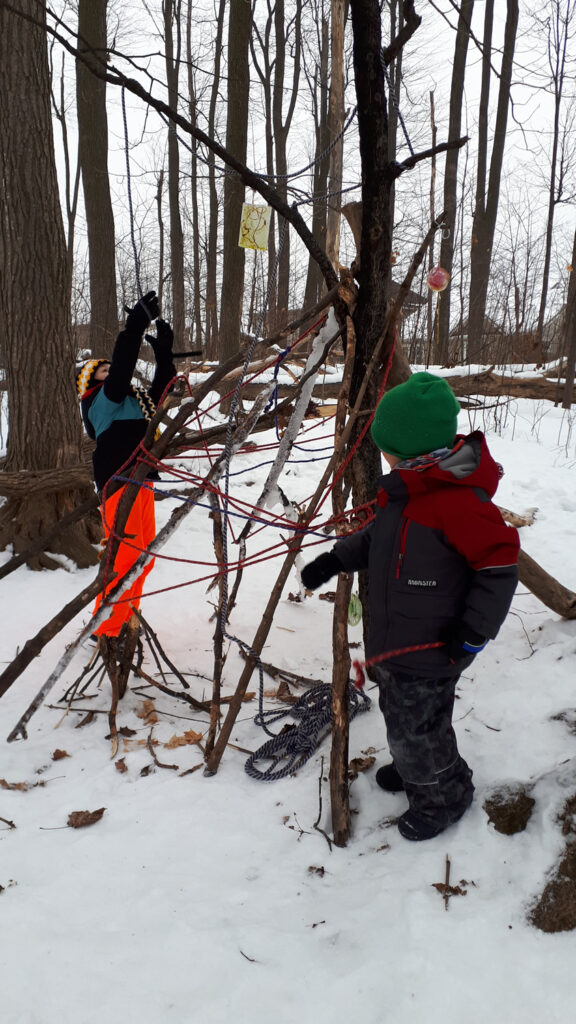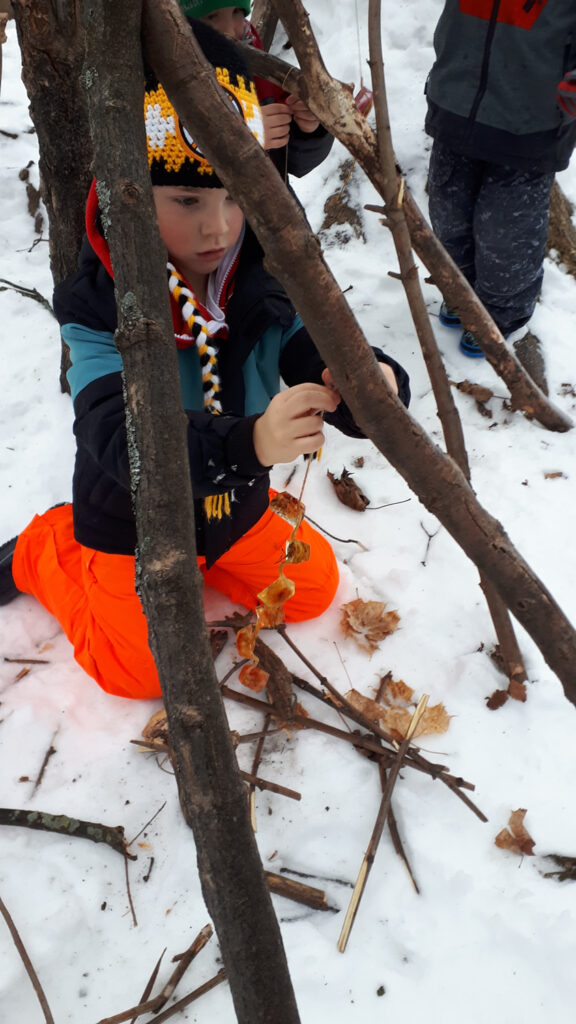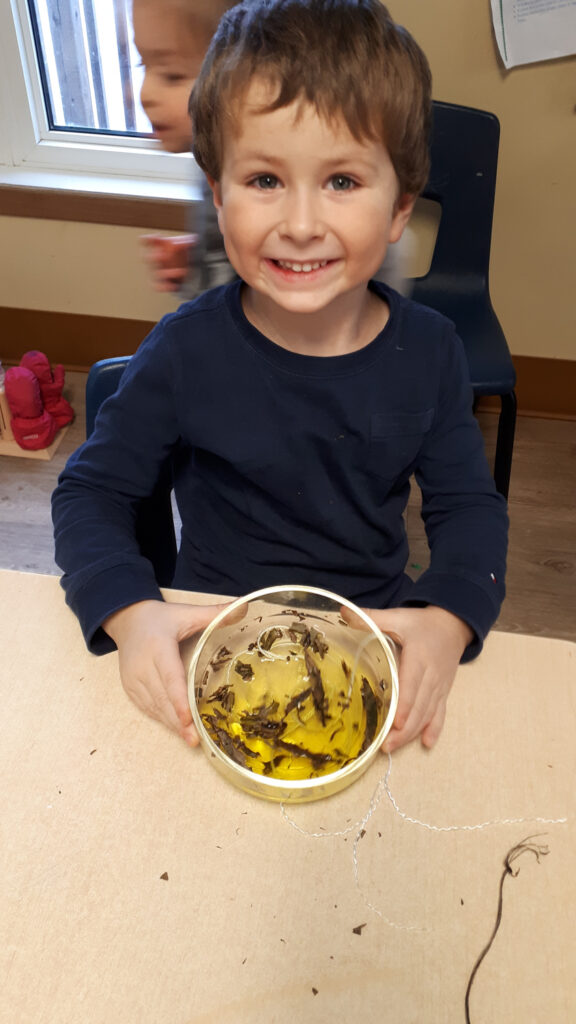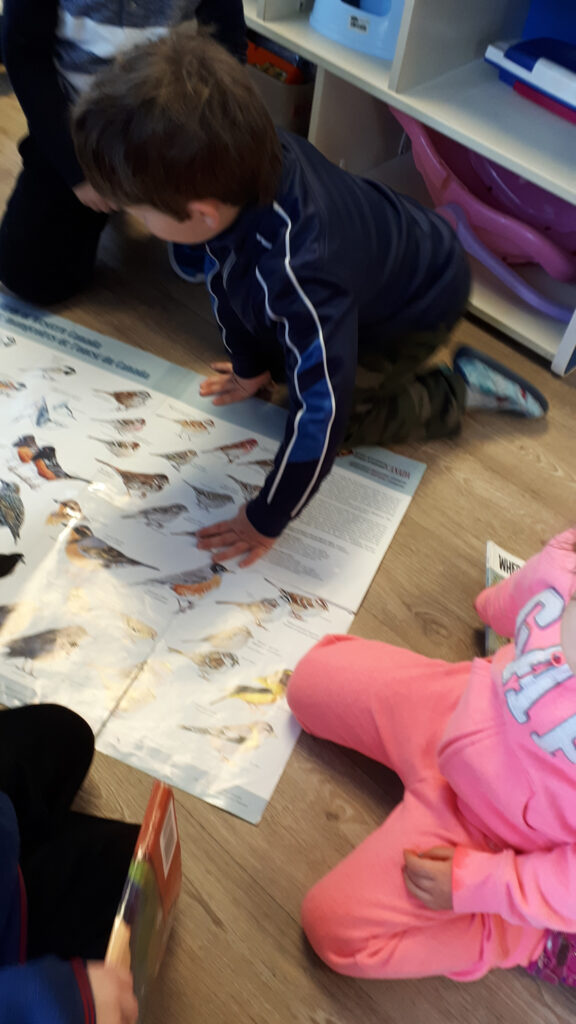The children have been delighting in their reciprocal relationship with winter birds. The children sing in the forest; the birds sing back to us, the children offer nourishment to the birds in the form of sunflower seeds; they, in turn, nourish the curiosity of the children and their desire to be closer to the birds by gracing us with their presence and filling our senses as they accept our offerings. I have been really in awe, watching this relationship seemingly naturally take root and flourish and I have also been gifted the opportunity to observe the many ways this reciprocity has guided so much of our learning together.
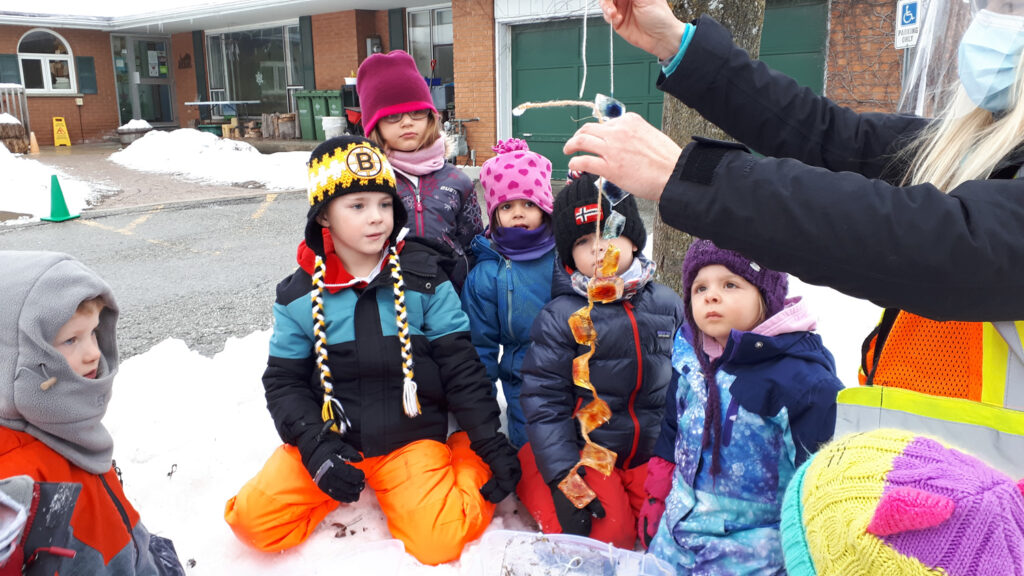
Let me try to begin to explain. It feels like months that we have been watching, listening to, asking about, learning about and sharing with the winter birds in our forest and outside our classroom. The children have put so much time, care and creative energy into finding ways to be closer to these beautiful birds and to contributing to their winter survival through feeding them. So many bird feeders have been created that the children have become experts in the domain of these creations. Inside the classroom, while planting sunflower seeds, the children connected this to the sunflower seeds they have been offering to our feathered friends. Conversations about sharing our flowers, once they grow, soon followed and a vision of giant sunflowers surrounded by birds was developed through the children’s ideas and conversations about the natural way birds would find such seeds. Exciting!
This new found realization brought us back to feeding birds in the forest. So we did. Again. This time, however, the children revised their plan about how they had shared with the birds previously. The newest ideas included placing feeders in our space, leaving for a short time to place feeders throughout the forest, and then returning to see who may be feasting on our gifts. What a treasure to witness the reactions of the children as chickadees surrounded our space, chirping their delight as they snacked on our feeders and even landing on one very still and patient child’s head! This experience, this morning, seemed to really solidify the connection the children have grown with birds.
Seeing the children plan and then revise the plan over the time together really got me thinking about their learning. Their persistence in finding ways to be closer to the birds and their resilience when at first they didn’t reach their goal in the ways they had imagined, pointed my focus in the direction of all of the serendipity learning that is occurring as we build this relationship with the natural world. Back at the centre that day, the children, for instance, began creating their own individual mind maps of their experience in the forest and, while each child had begun to create their own map, I watched as they approached their peers and asked them to share their perspective on the morning on their mind map. Each piece became small collaborative maps, giving voices to one another despite the original author of the work.
Then, we were given a box. “Do you think you can use this?” asked Jessica. I automatically replied “Yes”. I had no idea what for but I was certain the children would know what to do. When I brought this to the attention of the children, they had some different ideas about what to do with it. While everyone was on the same page of creating a type of house out of the box, not all agreed on whom the house would be for. This required us to come together, fully share our ideas about what we were thinking and then, as we have come very used to doing, voting on what idea we would ultimately go with. This has become a very agreed upon solution amongst our friends in such situations so I wasn’t surprised when i heard one of the children take the lead: “Stand up if you want a birdhouse, sit down if you want a people house and lie down if you want a different animal house”. I watched as the children cast their votes, counted, removed the option with the lowest number of votes and then went through the entire process again using the two remaining options. I can’t say i was at all surprised when the majority vote (which for some reason had become unanimous …) was to make a birdhouse.
Being the planners that they are, the obvious next step for this group was to create a visual plan together. Every child offered their ideas about the shape of the house, the shapes and types of doors and windows that should be created, the necessity of a nest, decor and a particularly shaped feeder that should be included and, as they each offered their ideas, they added them to the blueprint they were co creating. When it was time to construct the house, Alanah was handed the plan so she could assist in the cutting of windows and doors and their vision started to take shape. Each child added their ideas from the plan and then shared in the joy of making the “best birdhouse ever”. They came and went from the construction and decoration of the house over the course of a few days. I didn’t observe a single disagreement during the construction phase. Not one. They were following the plan they had agreed upon. They also showed their respect for one another’s work verbally by asking about their work, offering praise for their creations and, the ultimate compliment, copying a friend’s idea or two along the way. The house is magical. The children are filled with pride. We talked about this. I asked them why they think their house turned out so amazing and I was genuinely touched to learn that they believed that having “everyone’s ideas together make it even better”, that “one idea is ok but everyone has good ideas so when they are put together, things can be so great”. Have you ever heard anything more true?
The question of sharing our house with the real birds, outside in the snow, arose. I asked the children what they thought about that. They recognized that the wet snow would destroy the house but also that the materials used in it’s creation may not be healthy for the birds. So instead, they placed it on the table in our dramatic place area where they watch the real birds through the window and create their own representations of birds to hang in the house they built together. So far, we have a yellow bird, a blue jay and a pooping cardinal residing there.
As I view our learning and growth together from various lenses, I feel more and more curious about just how much we actually are learning through and because of the connections we develop with nature. How these connections guide our experiences, how we connect to one another through the shared connection with nature or, in this particular case, our winter birds. Our shared genuine care and respect for these small winter wonders has brought more paths in many directions through our learning together than I had imagined or noticed but, now looking back over my time spent with children in nature, it always really has.

